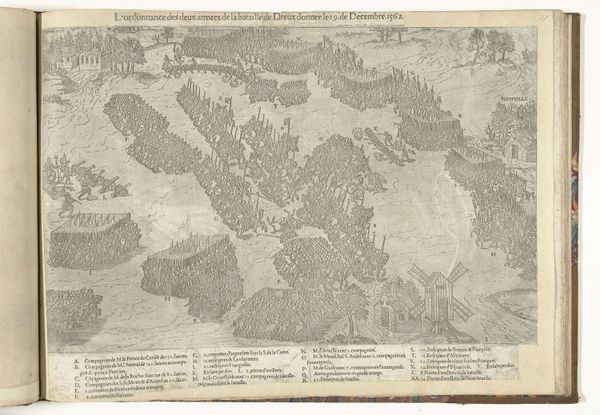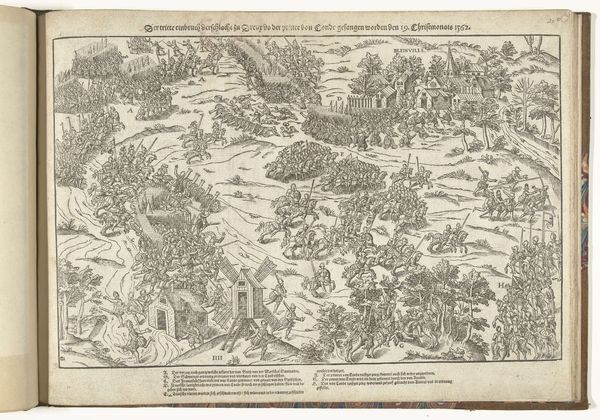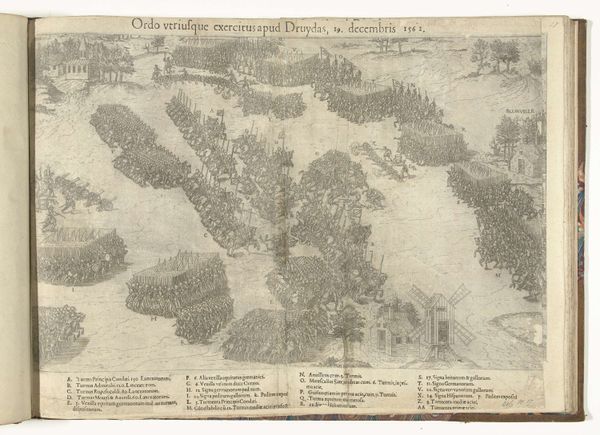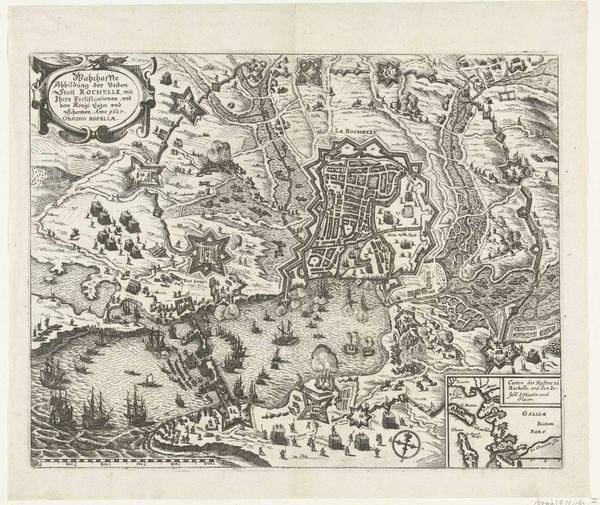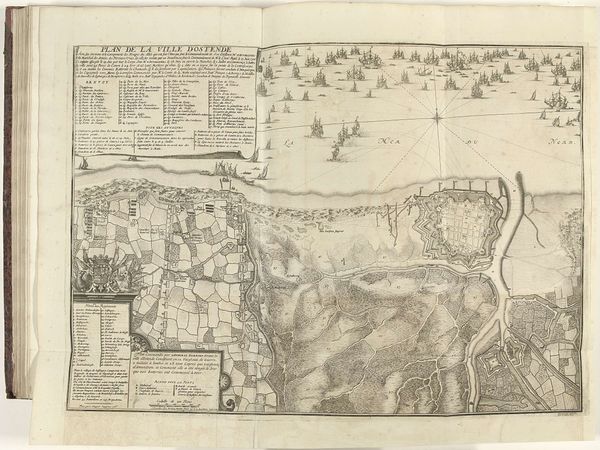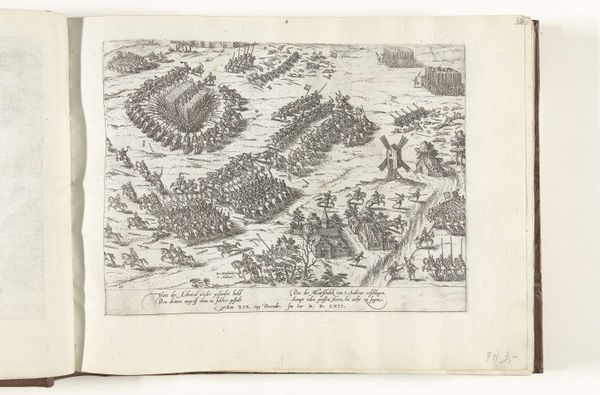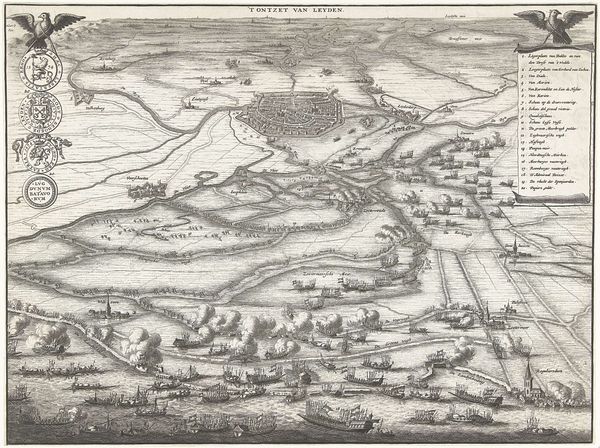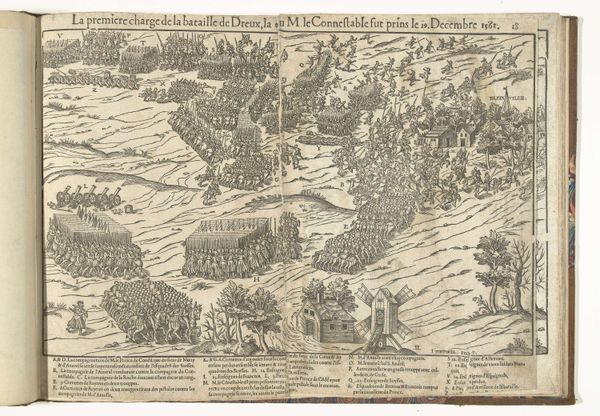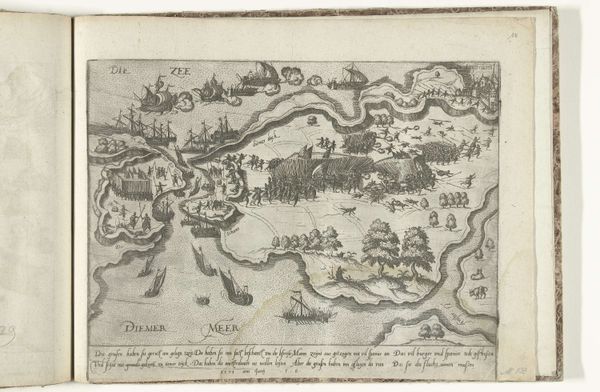
drawing, print, paper, ink, engraving
#
drawing
# print
#
landscape
#
figuration
#
paper
#
11_renaissance
#
ink
#
history-painting
#
engraving
Dimensions: height 376 mm, width 505 mm
Copyright: Rijks Museum: Open Domain
Curator: Let's turn our attention to this intriguing print, "Treffen van de legers bij Jarnac, 1569," created by Jean Perrissin. It depicts the meeting of armies during the Battle of Jarnac in 1569. The piece employs engraving and ink on paper. Editor: Whew, there's a lot going on here! At first glance, it's like looking at an incredibly detailed battlefield ant farm. Sort of chaotic, but also… compelling. Curator: Indeed. It's an early example of historical documentation through imagery, and Perrissin, likely not present himself at the battle, reconstructs the event through gathered accounts and symbolism common for such depictions at the time. Observe the dense concentration of figures, which serves to underscore the scale and intensity of the confrontation. Notice also the elevated perspective. Editor: Right, it's like a drone's-eye view, centuries before drones! You get a sense of the landscape—that river winding through. All those tiny, repetitive figures… I’m struck by how impersonal and dehumanizing the visualization of war was at that time, but still dramatic. Are the mountains also symbols here? Curator: Potentially. Mountains in art of this era could represent steadfastness, endurance, but they also frame human actions against an immutable and immense backdrop. What's particularly interesting, I think, is how the relatively new technology of printmaking allowed such scenes, loaded with propagandistic potential, to be disseminated widely. Editor: Absolutely! The visual echoes of war throughout time and media—from tapestries to television. Does seeing it mapped out like this—all strategic and… tidy in a way—sanitize the messy reality? Makes me wonder about its effectiveness. What were people really thinking looking at that image back then? Curator: We can't know their exact thoughts, of course, but the image’s power rests partly on the assumed virtue of the depicted victor and the reassurance that such complex events can be understood and represented, and therefore managed, controlled. Editor: Well, looking at this "organized chaos", as interesting as it is, does remind me of war as this insane theatre that humanity keeps staging again and again. I can’t say I see much progress here. Curator: It speaks to the complicated relationship between history, art, and memory itself. The ways these stories are reshaped visually serve political and social ends, so the image and the art endure far beyond the initial moment.
Comments
No comments
Be the first to comment and join the conversation on the ultimate creative platform.
